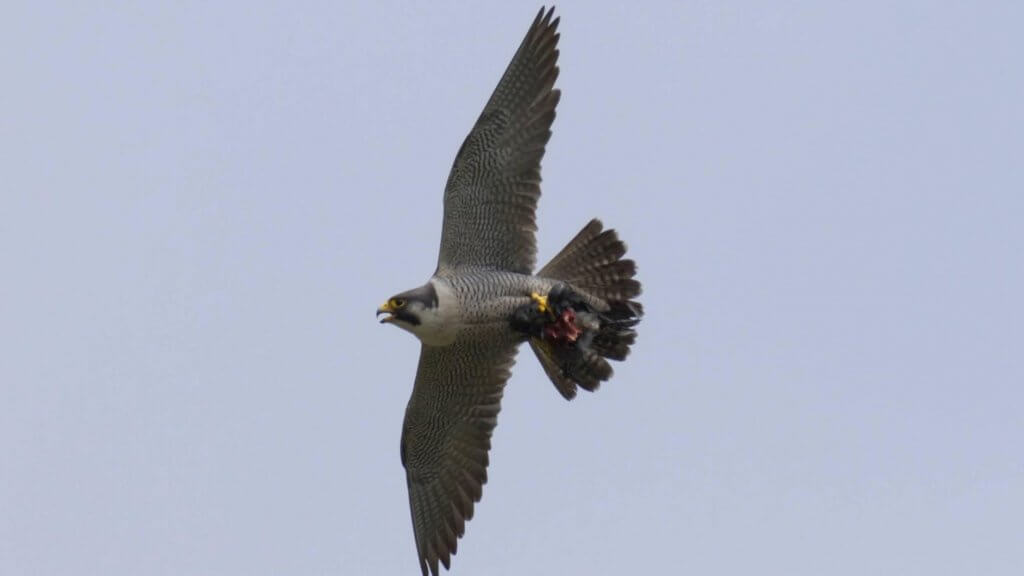Technology Models Falcon’s Attack On Prey In Bid To Tackle Illegal Drones

Technology is being developed to attack rogue drones just like a peregrine falcon hunts down its prey.
The idea is part of a £2 million bid to avoid a repeat of the chaos caused by the gadgets at airports.
Radar, electro magnets and artificial intelligence (AI) are also among the inventions being tested out to find ways to “detect, disrupt and defeat” hostile, malicious and illegal uses of drones.
The news comes as the Civil Aviation Authority (CAA) announced drone users would face fines of up to £1,000 if they fly their device without passing an online theory test or registering as an operator.
Drone sightings at Gatwick in December caused around 1,000 flights to be cancelled or diverted over 36 hours, affecting more than 140,000 passengers in the run-up to Christmas.
A number of other airports have been forced to suspend flights for several hours due to drone activity this year, including Heathrow.
Funding has been split between 18 companies as part of a competition run by the Defence and Security Accelerator (Dasa), the part of the Ministry of Defence (MoD) tasked with finding and funding technology which can give the UK’s defence and security services a “strategic advantage over adversaries”.

File photo of a drone flying in Hanworth Park in west London. (John Stillwell/PA)
Oxford-based company Animal Dynamics has been given around £100,000 to continue developing its idea for a “swarm system” which would “employ peregrine falcon attack strategies” to “detect and neutralise” drones and test it to see if it works.
Proposals being tested by other companies also include technology to disable 4G and 5G connections on drones and AI for sensors which will automatically identify them in the sky.
Other options will look at ways to track drones or wipe out their electronics.
Another idea involves signals to detect drones in areas where there are a lot of birds.
David Lugton, the MoD scientist leading the project, said the threat from drones – also known as Unmanned Air Systems (UAS) – has “evolved rapidly”, adding that it has become a danger to overseas operations as well as in the UK.
The work is being carried out on behalf of Defence Science and Technology Laboratory (Dstl), another part of the MoD which has been researching drones for a decade.
Last month it was announced police could be given more powers and resources to crack down on illegal drone use with a mobile unit brought in to respond to incidents across the UK.
The move was in a bid to also tackle the use of drones to bring drugs, weapons, phones and other contraband into jails.
The unmanned aircraft industry is expected to contribute an extra £42 billion to the UK economy by 2030, with more than 76,000 drones expected to be in use by this date, according to the Home Office.
But latest figures showed there were 168 police recorded drone incidents in England and Wales in 2018 and 165 drones were found in prisons in 2016 and 2017, according to the department.
And the UK Airprox Board said there were 125 near-misses between drones and aircraft reported in 2018, up by more than a third on the total of 93 during the previous year.
No-fly zones around airports were extended from 1km to 5km in March in an effort to prevent disruption.
From the end of November, anyone with a drone weighing more than 250g will need to register it with the CAA as well as pass the competency test.
John Lewis has even stopped selling drones amid growing concerns over their misuse and the problems caused at airports.
Flora Thompson is PA Home Affairs Correspondent.




